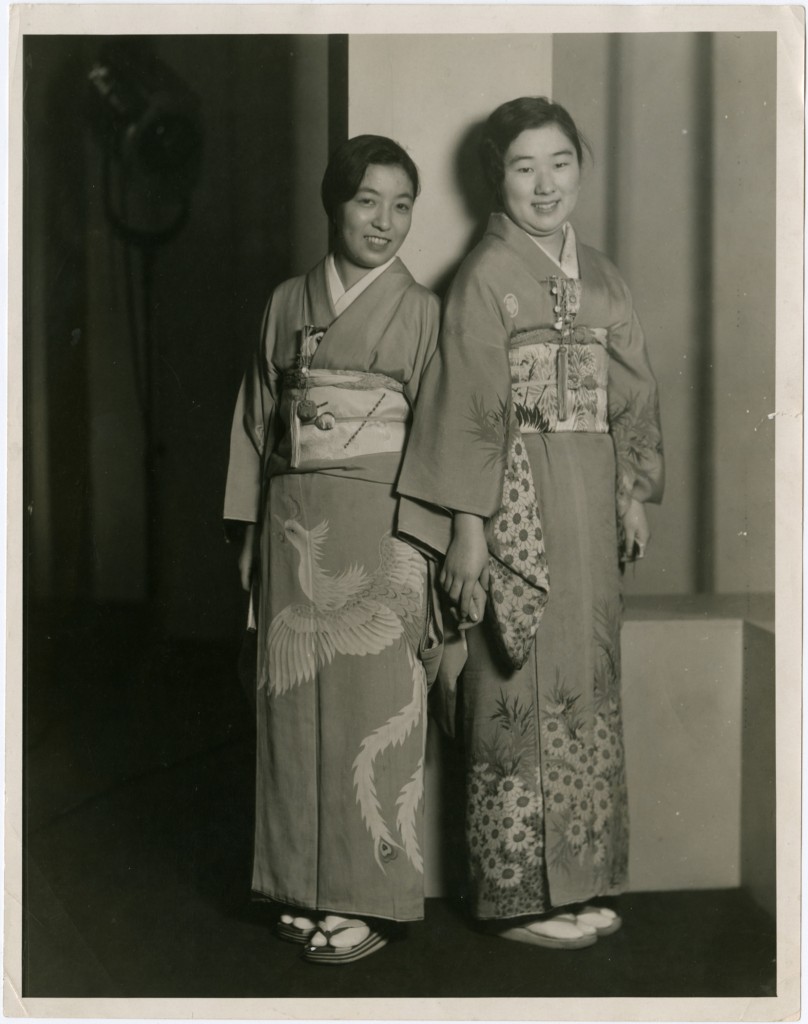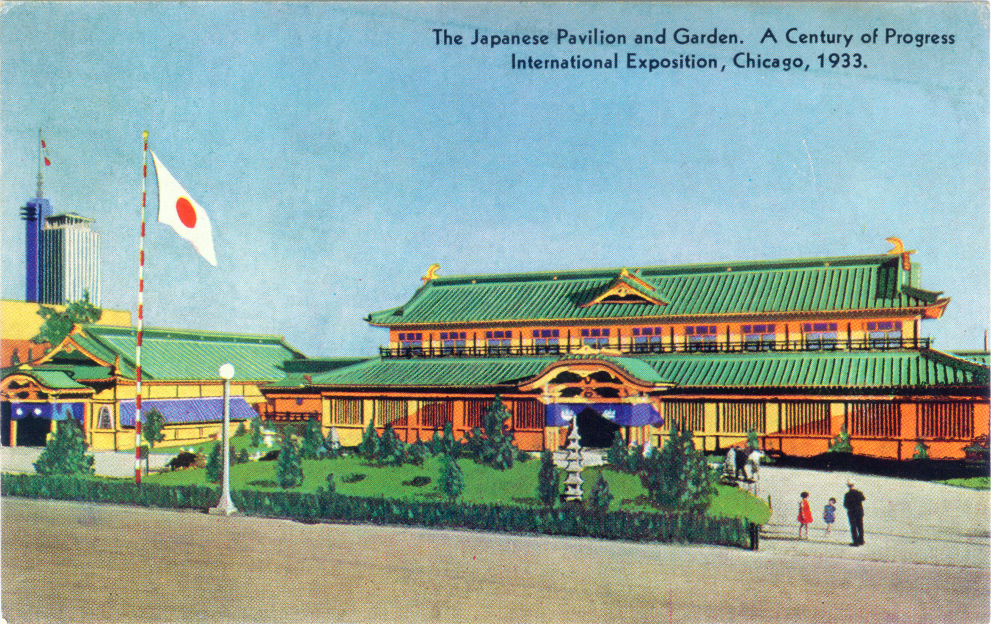November 30, 2015
One of the unique joys of working at Densho is creating collections centered on narrators and their families. The visual histories provide a context and story that usually isn’t present when creating online collection. Photographs are particularly enriched by this tandem of interview and documents. My first collection I worked on at Densho was of narrator, Mae Kanazawa Hara. She had been interviewed by Densho in 2004 and her family sent in several documents and photographs from the pre-War and War eras. One of those photographs was of Mae Hara and her cousin Rei at the Chicago’s World Fair in 1933. When I first saw the picture I wondered what a girl from Seattle was doing in Chicago during the World’s Fair. Later when I began listening to Hara’s interview, she told the story of her musical education in Chicago which just happen to overlap with the World’s Fair. She worked in the Japanese Pavilion and even worked during the open ceremonies as an usher dressed in a kimono. One of the highlights of her summer job was participating in a 5,000-voice choir that sang Handel’s Messiah during the ceremony. This small story added a wealth of information to my description of the photograph; however, I was not anticipating how Mae Hara’s time in Chicago would later impact her life.

In 1943 Mae found herself in the Minidoka Concentration Camp in Idaho with her husband, Iwao. In order to leave the camps, Japanese Americans had to find work and sponsors outside the exclusion zone. Mae was able to reach out to her Chicago contacts from her college days and they were able to find her and Iwao work and a place to stay. Mae and Iwao left Minidoka in March 1943. They spent a few months in Chicago and then settled permanently in Madison, Wisconsin. They never returned to live in Seattle. Without Mae Hara’s interview I would never had known just how important her time in Chicago was in the development of her life. With only the documents in front of me I might not have drawn the connection (or have been able to definitely assume the connection) between her education in Chicago and her later resettlement there during the war. This melding together of visual histories and documents to tell such a complete narrative of such a dark time in our country’s history is what makes Densho so special and important.
Watch the clip of Mae discussing her time in Chicago:
—
Do you have materials related to WWII incarceration?
If your family or community organization has documents related to the Japanese American experience before, during, and after World War II, please consider loaning them to Densho for digital preservation. We seek materials including artwork, scrapbooks, letters, diaries, government documents, audio/visual recordings, newspapers, and magazines. Each item will be scanned and made available online through our Digital Repository. This grants access to students, teachers, researchers, scholars, professionals, and the general public. After creating high quality digital copies for preservation purposes and for web/online access, we return the materials to individuals, families, or organizations. We also provide them with a complete set of digital files for their own use. To find out more about loaning materials, please contact Caitlin Oiye, Photo and Document Collections Manager at collections@densho.org.
—
Sara Beckman is a 2014 graduate of the University of Washington with a master’s in Library and Information Science where she focused her studies on metadata, cataloging, and archives. She has interned with several other digital history projects and archives including The Theodore Roosevelt Digital Library, South Asian-American Digital Archive, and the Early Seattle Theatre History Project. Sara lives in Kirkland with her wife and cat and can be found reading at her favorite coffee shop in her spare time.

